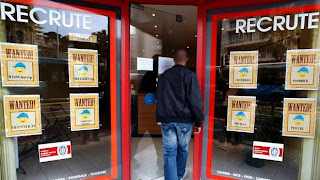 |
| Students protest the rising costs of student loans for higher education on Hollywood Boulevard on Saturday in Los Angeles. |
(US) Even as the nation's households have reduced their total debt in recent years, the share that owes student loans has increased sharply, an analysis of the latest available Federal Reserve data shows.
Nearly one in five (19%) households in 2010 had outstanding student debt or loans in deferment, up from 15% in 2007, and more than double the number two decades earlier, says the Pew Research Center in a report released Wednesday.
And while increases in outstanding student debt are occurring across all income levels and ages, the trend is taking the biggest bite out of the nation's youngest and poorest households.
The report is based on the Federal Reserve's Survey of Consumer Finances, published in June. The survey, conducted every three years, found that average total indebtedness between 2007 and 2010 for all households fell to $100,720 from $105,297. Yet the Fed also noted that debt related to education had risen in some households.
The Pew center's deeper dive into the data found, that among households headed by someone younger than 35, a record 40% owe student debt, the highest share among any age group.
Among households earning less than $21,000, outstanding debt represented 24% of household income.
"(The report) makes the very important point that the lowest income families bear the heaviest burden of debt relative to income, which reinforces the importance of Pell Grants and other aid that helps limit the need to borrow," says Lauren Asher, president of the Institute for College Access & Success.
Richard Fry, a Pew senior economist and author of the report, says he hopes the report will provide perspective for families as they consider educational options.
"Given the fact that the job market has been especially weak for young adults, I think there's a conversation going on in a lot of American families with high school students about, 'Is college worth it?' " he says. "Student loan debt is sort of the lightning rod issue for this conversation."

.png)




















